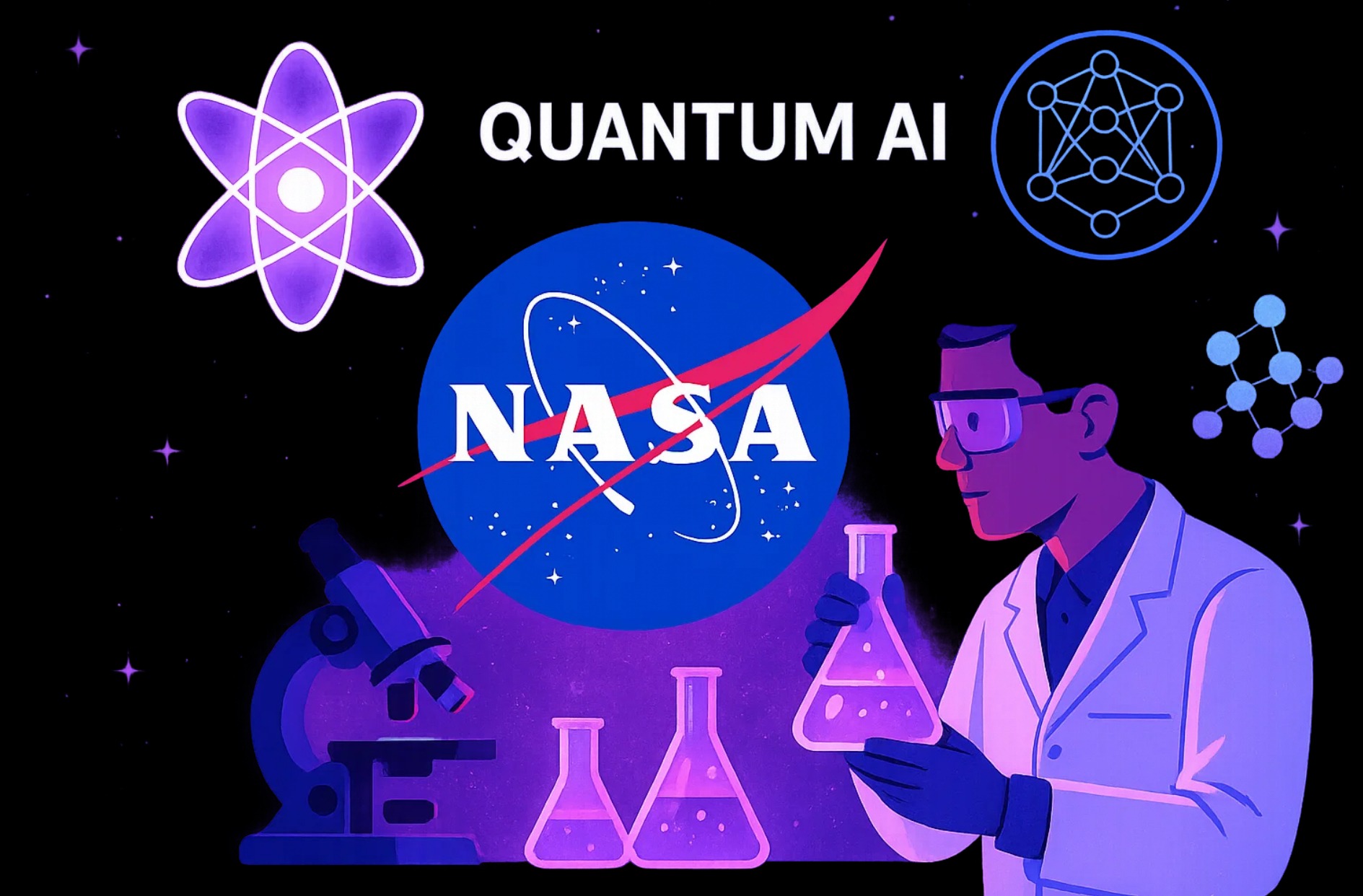What happens when space exploration meets quantum computing?
NASA’s Quantum Artificial Intelligence Lab—affectionately known as QuAIL—is where that question begins to unfold.
What is QuAIL?
NASA’s “Quantum Artificial Intelligence Lab”.
Founded in collaboration with Google and the Universities Space Research Association (USRA), QuAIL lives at NASA’s Ames Research Center in California. It’s not a place of ordinary algorithms—it’s a place where time and computation bend, just enough, to catch glimpses of what could be.
So what’s the goal of QuAIL?
To explore how quantum computing could help solve the massive, complex problems of space, science, and beyond.That means running simulations, optimizing trajectories, and pushing artificial intelligence into new dimensions—literally.
Why Quantum?
Classical computers are powerful. But quantum computers? They don’t just calculate—they superposition. They entangle.They can theoretically solve problems in seconds that would take normal computers longer than the age of the universe. (Yes. Literally.)
QuAIL’s early experiments involved D-Wave systems, a kind of quantum computer known for “quantum annealing”—an approach especially good for optimization tasks, like scheduling satellites or plotting the safest, fastest path for a spacecraft.
But it’s not just about machines. QuAIL is deeply invested in developing algorithms and strategies that will eventually let quantum computers support space missions, AI learning, and maybe even unlock new laws of physics.
Why QuAIL Matters for the Future
QuAIL is one of the first real-world intersections between quantum physics, machine learning, and interstellar goals.
It invites us to ask:
– What happens when artificial intelligence begins to reason like quantum particles?
– Can quantum logic help us explore black holes, simulate climate futures, or understand the deepest math of the cosmos?
The truth is—we don’t know yet.
But QuAIL is already listening for the answers.
Closing Thought:
In a world changing faster than ever, QuAIL reminds us that some of the most powerful innovations come from unlikely combinations: curiosity, science, and a willingness to leap into the unknown.
We’re not just building computers.
We’re building questions big enough for the stars.
QuAIL NASA References
- NASA. (n.d.). Quantum Artificial Intelligence Laboratory (QuAIL). NASA Ames Research Center. Retrieved April 25, 2025, from https://www.nasa.gov/intelligent-systems-division/discovery-and-systems-health/nasa-quail/
- NASA. (n.d.). QuAIL Team’s Publications. NASA Ames Research Center. Retrieved April 25, 2025, from https://www.nasa.gov/general/quail-publications/
- Grabbe, S., Rieffel, E., Hadfield, S., Mandrà, S., & Marshall, J. (2019). Overview of NASA QuAIL Team Research[Presentation]. NASA Technical Reports Server. https://ntrs.nasa.gov/api/citations/20190032614/downloads/20190032614.pdf
- Brady, L. T. (2023). Quantum Artificial Intelligence and NASA [Presentation]. NASA Technical Reports Server. https://ntrs.nasa.gov/api/citations/20230003144/downloads/talk.pdf
- Rieffel, E. G., et al. (2019). From Ansätze to Z-gates: A NASA View of Quantum Computing. arXiv. https://arxiv.org/abs/1905.02860
- NASA. (n.d.). What is Quantum Computing? NASA Technology. Retrieved April 25, 2025, from https://www.nasa.gov/technology/computing/what-is-quantum-computing/
- NASA. (n.d.). Quantum Computing Research at NASA. NASA Advanced Supercomputing Division. Retrieved April 25, 2025, from https://www.nas.nasa.gov/SC17/demos/demo19.html
- Singh Sekhon, G. S. (2025, January 2). Quantum AI: The Future of Artificial Intelligence. Medium. https://medium.com/@gianetan/quantum-ai-the-future-of-artificial-intelligence-84b1b2447eb4

No responses yet